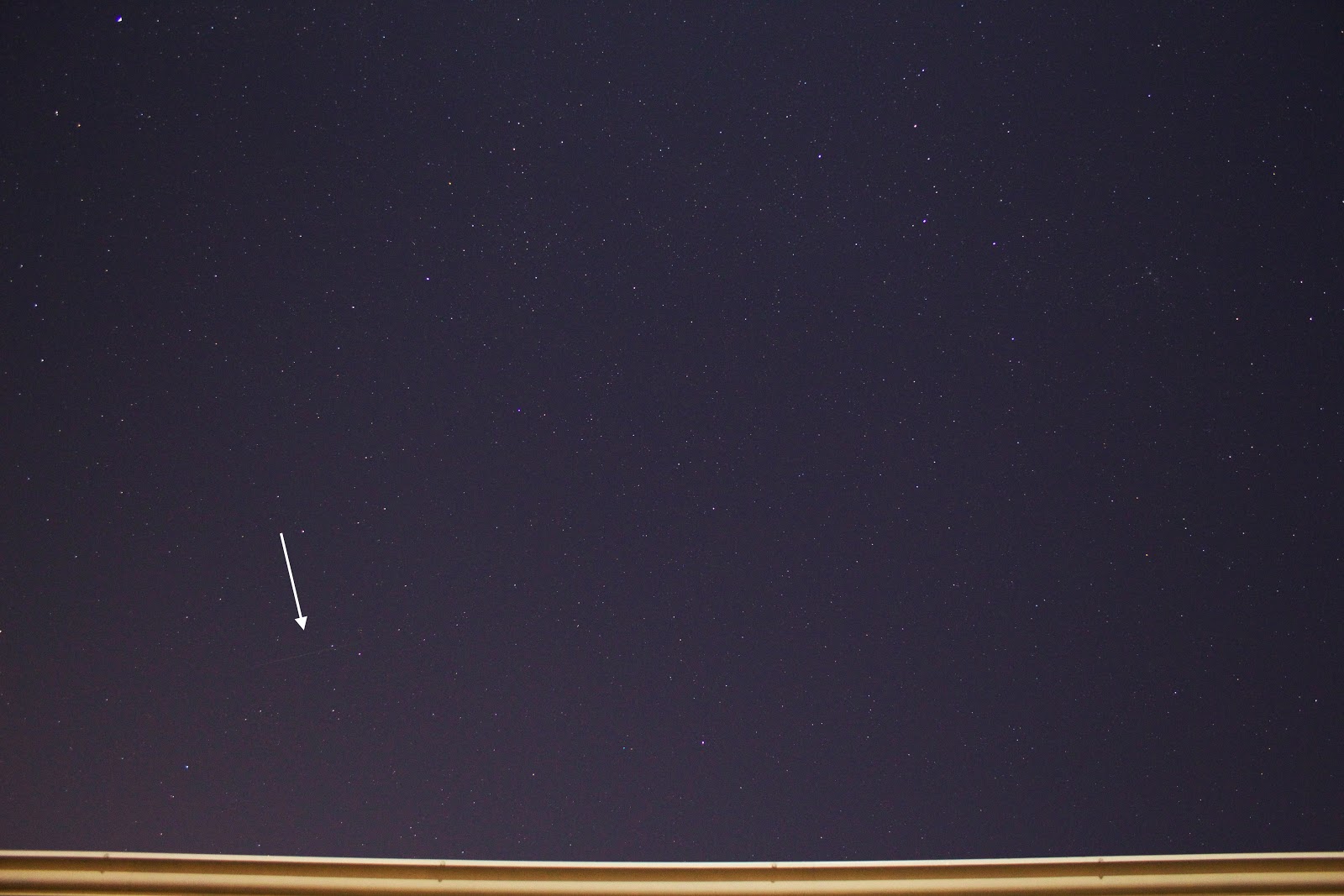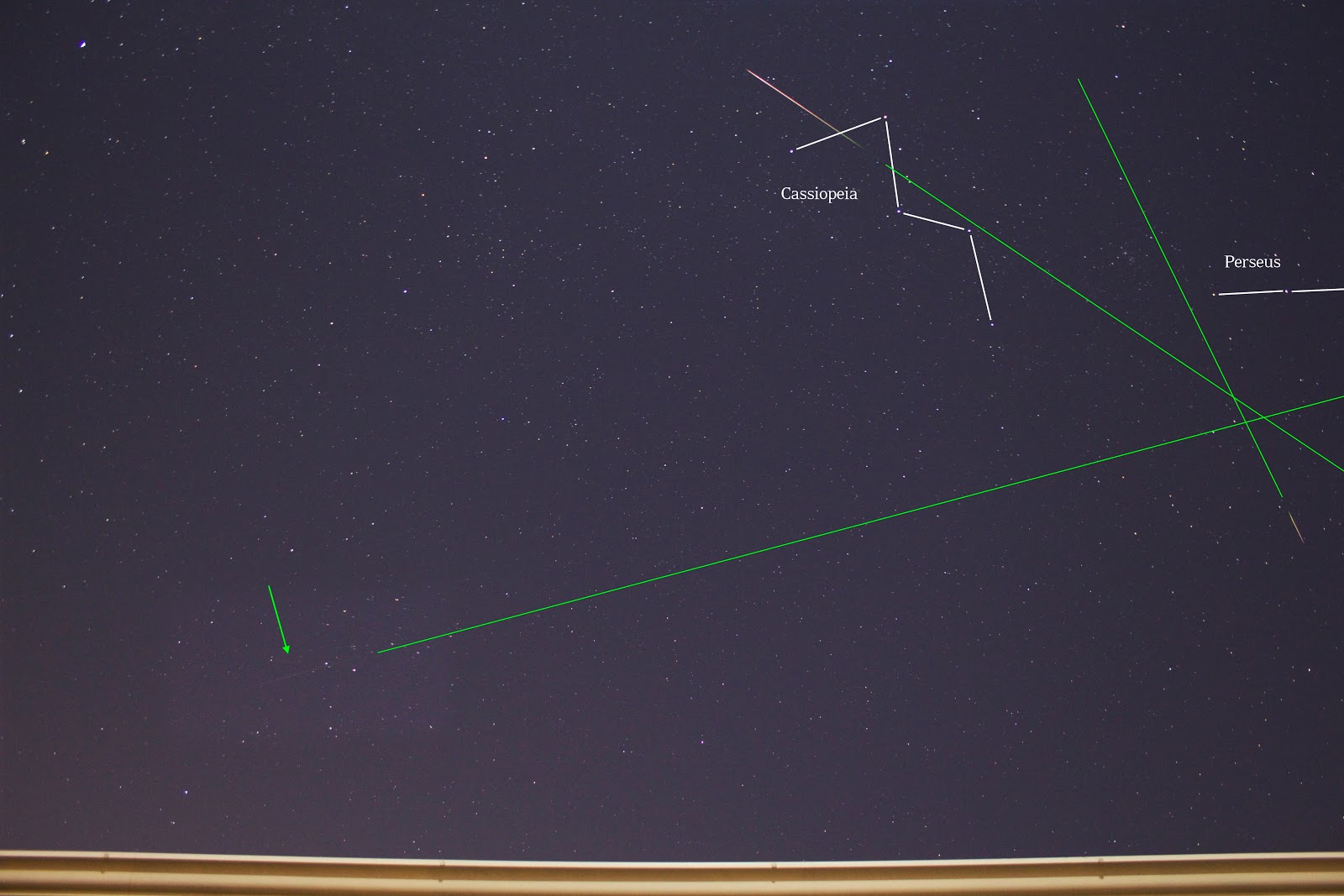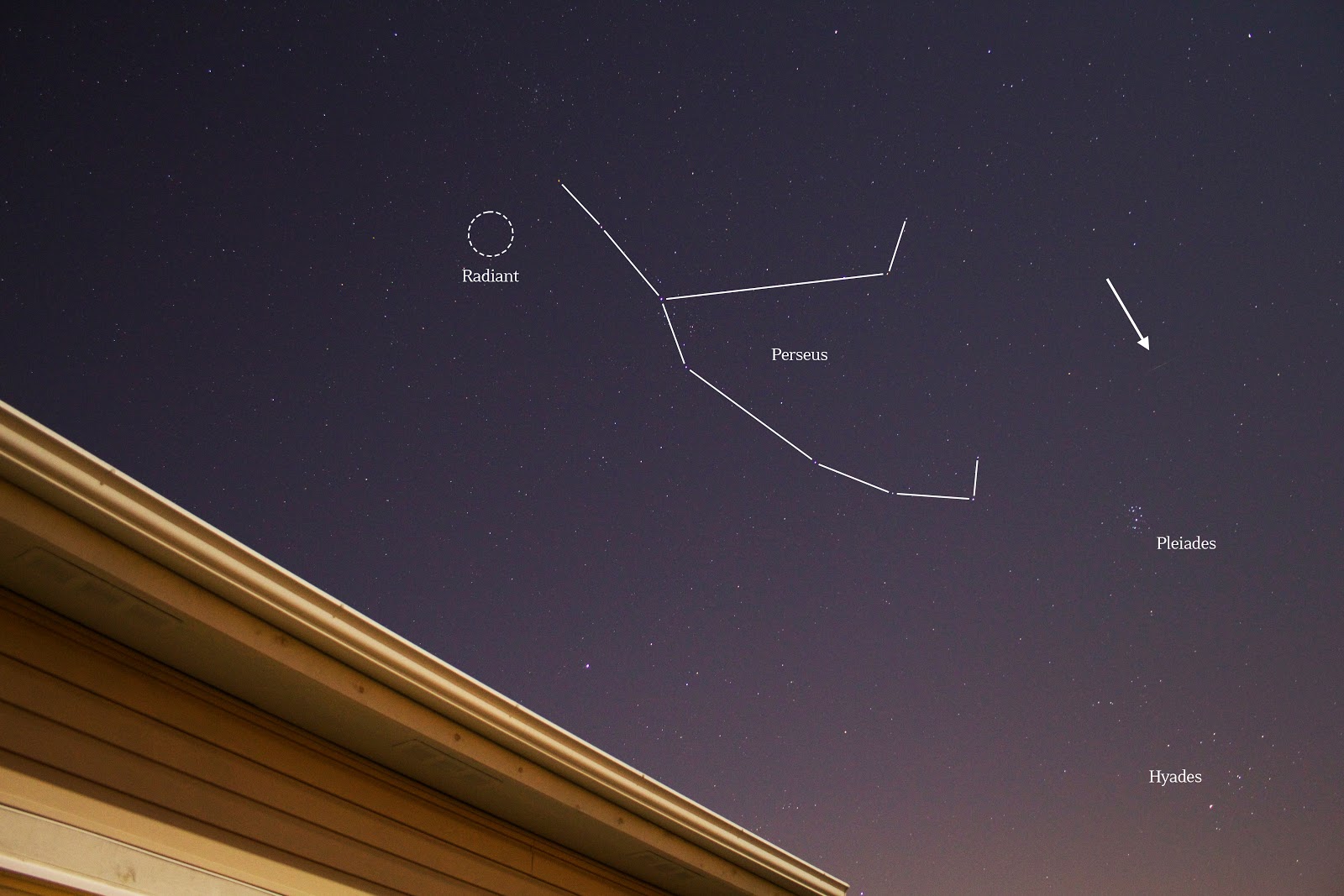The next night, the night of August 13, I looked at my Scope Nights app to see if it would be clear - but the icon was red so I mentally planned on not going out that night. It wasn't until I took Katie out again that night that I noticed the sky was perfectly clear with a bright moon high to the south. I looked at the app again and noticed that the forecast was for clear skies but that the icon was red because of the moonlight.
In any case, I decided that a clear sky to the north (which happened to be the best direction for observing the Perseids) was worth a shot setting my camera out to try to capture something. I set my camera up on the back patio so it hopefully wouldn't get stolen (we're building a fence soon).
I woke up in a hurry for work, but eagerly put my memory card into my computer and began sifting through the 555 photos. I found a handful of meteor candidates, and two very clear very bright meteor streaks!
 |
| Close crop from larger image, T5i, ISO 800, 18mm, f/4, 15 sec, contrast in Photoshop |
 |
| 2 frames aligned, T5i, ISO 800, 18mm, f/4, 15 sec, contrast in Photoshop |
These two bright meteors have a javelin shape and irregular colors, they did not have trails on the frames before or after (ruling out many satellites), and the best evidence is that they are pointing to the anticipated radiant point. These are the real thing! Because they happened in two consecutive frames, we know they lit up within 30 seconds of each other - this makes them great tools for backtracking to the radiant point.
 |
| Single frame with T5i, ISO 800, 18mm, f/4, 15 sec, contrast in Photoshop |
Now let's look at a candidate Perseid meteor - a faint streak of light that we're not so sure about. It could be a satellite, or another meteor unrelated to the Perseids. How can we find out? First, I look to see if there are any lines in the frames before or after. If this 15 second exposure is of a satellite, there should be a continuation of the path in the adjacent frames - but there isn't. Ok, it might be a meteor, but is it a Perseid? Let's look at the paths.
 |
| 3 frames aligned, T5i, ISO 800, 18mm, f/4, 15 sec, contrast in Photoshop |
Here's the candidate overlayed onto the confirmed meteor photo. Notice how the paths of the two bright meteors meet right where we expected the radiant to be. This candidate appears to be originating from the same point - so it's very possible that this is also a faint Perseid.
 |
| Single frame with T5i, ISO 800, 18mm, f/4, 15 sec, contrast in Photoshop |
Now what about this little guy? A faint streak in the sky with no trails in the frames before or after. Sounds like a meteor - but is it a Perseid? It is certainly in Perseus, but the angle of the origin is a little off. It should look like it's flying out of the radiant point, but instead it looks more like it's cutting across Perseus. I'm not sure sure about this one - It's in the right general orientation but not quite.
No comments:
Post a Comment